The Best Headphone AMPs in 2024
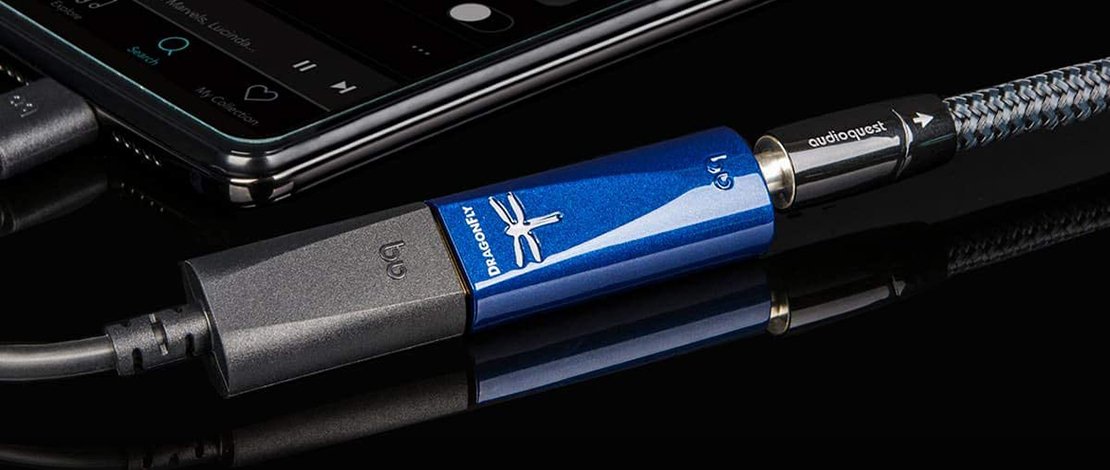
Some high-end headphones won’t reach their full potential without a headphone amp. And even if they don’t need it, they can get a noticeably better sound with one. Finding the best headphone amp for your needs can be a long and complex process.
It all depends on which headphones you have, where you listen to music, which audio devices you own, etc. But today, we are showing the best headphone amps for the majority of users. They all come with great features and they all can be used with a variety of headphones with great results. Below the list of the best picks you can find a headphone buying guide where you can learn more about amps and DACs.
But, before that, let’s talk about best headphone amps. We have portable headphone amps, headphone aps that come with DACs, gaming headphone amps, and more. Let’s begin.
FiiO K5 Pro
Outstanding Value for Excellent Audio
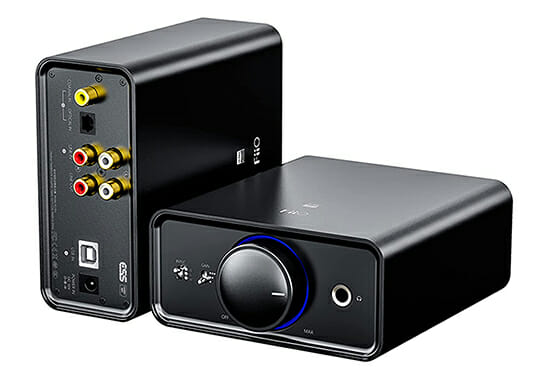
- ES9038Q2M 32-bit processing
- XUF208 USB decoding chip
- 768kHz and DSD256 inputs
The FiiO K5 Pro has been a mainstay recommendation for people looking for outstanding value when it comes to an AMP/DAC combo because it can provide a noise-free experience and handle some power-hungry headphones with ease.
The reason the K5 Pro can do this is because of the flagship DAC chip ES9038Q2M 32-bit processing, along with the XUF208 USB decoding chip with 768kHz and DSD256 inputs. The amount of variations in terms of inputs is also impressive with coaxial/optical/RCA line-in inputs, with optical and coaxial inputs supporting up to 192kHz.
More importantly, the K5 Pro uses a 15V power supply that is designed to minimize noise allowing the AMP/DAC to power both low-impedance and high-impedance headphones with no issues. Although this AMP/DAC is quite simple in terms of other features it has the most important aspect down – great audio while using great components and stable power.
- High-quality audio without any other fuss around it
- Good and stable power delivery for a noise-free experience
- Plenty of input variations for a wide variety of uses
- Built well with a smooth knob and a metal body
- The simplicity of this device might not impress certain buyers
Sound BlasterX G6
The Best Gaming Headphone AMP
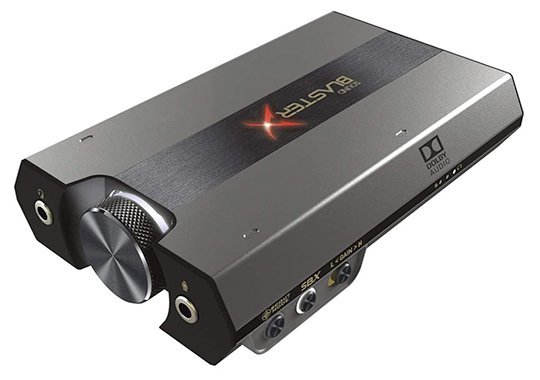
- Dimensions: 111 x 70 x 24 mm
- Sampling Rate: Up to 32-bit/384KHz
- I/O: 3.5mm Headphone Jack; 3.5mm Microphone Jack; Line/Optical In and Out; Micro USB
- Optical Cable and Micro USB Cable Included
If you own multiple gaming consoles and listen to music mostly on your PC, you should seriously think about getting the Sound BlasterX G6. This is a headphone AMP and DAC that works with all major consoles (PlayStation, Xbox One, Switch) and can also be used on PCs.
First of all, the Sound BlasterX G6 delivers amazing sound. Next, it supports 5.1 and 7.1 virtual surround sound, which works rather well. The SBX mode isn’t as good as the real deal but the difference between stereo and virtual surround is easily noticeable. You can hook up any pair of headphones and, unless they are a dirt-cheap model, you will hear the difference.
The device is very easy to use. Just hook it up to the audio source, hook up your headphones and let it do its magic. Another good think about it is that you can use any pair of headphones with all your gaming consoles and your PC. This amp doesn’t only enhance music, it also improves sounds in video games.
Ambient noises, which can be distracting, are lowered while sounds like footsteps and voices are a bit amplified. The amplifier can boost all audio coming to the headphones, allowing incredibly high loudness while playing games.
- Works With Every Major Console
- Virtual Surround Is Great When Playing Games
- Noticeably Improves Audio Quality
- Very Easy To Use
- A Bit Pricey
- Limited Input Selection
FiiO JadeAudio KA3
Portable USB DAC and Amplifier
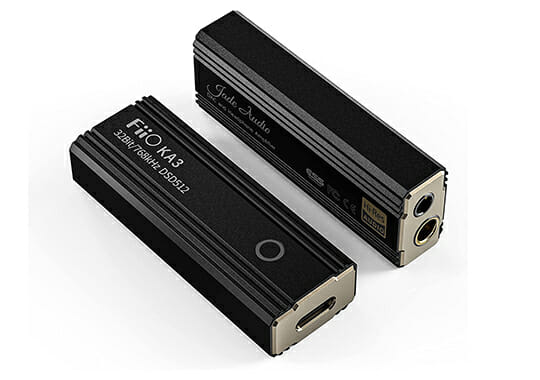
- ESS ES9038Q2M
- 32bit/768kHz
- 3.5mm single-ended and a 4.4mm balanced output
Listening to music on the go has become a common habit but unfortunately, if you want to experience good audio quality in most cases you would have to sit at your PC where you can connect your headphones to a solid AMP/DAC device.
The KA3 from FiiO solves this issue by providing you with a high-performance USB DAC and amplifier you can use on the go. This device uses a flagship ES9038Q2M DAC and can output high-quality 32bit/768kHz. The KA3 also has single-ended and balanced outputs with strong signal power, a low noise ratio, and almost 0 noise.
The KA3 is built well, being made entirely from metal, and uses a standard USB C connection which means it can be paired to any device that you own (Windows, iOS, Android, Mac, etc). Considering the portability of this device it also has a mobile app that can help you with more controls for filters and channel balance adjustments. You do not have to use it, but it does come in handy if you want more personalized settings.
FiiO is a reputable brand when it comes to audiophile components and they offer reasonable prices for their devices, therefore, the KA3 makes sense for us.
- A small form factor that can be used for outside listening without issues
- High-quality components that will allow your audio files to be reproduced correctly
- Reasonable price for the overall package offered by FiiO with the KA3
- While the hardware side of this device is quite nice it seems that the optional software you can use is not the best
Cambridge Audio DacMagic 200M
A True Audiophile Experience
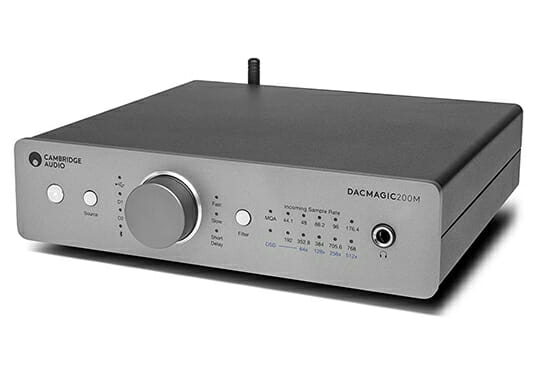
- Dual ESS ES9028Q2M DACs
- 32bit/768kHz or DSD512
- Digital optical, digital coaxial, and USB
- Frequency Response 10Hz to 50kHz (±1dB)
- Signal to Noise Ratio >115dB (A-Weighted)
If you have dealt with audio enthusiasts you have most likely heard of the hardware provided by Cambridge Audio since they have made a name for themselves in the audio market. The 200M comes from a long line of successes, superseding the 100M AMP/DAC, and offering stellar performance as expected.
Inside the 200M, you will find dual ESS ES9028Q2M DACs that handle digital audio files up to 32bit/768kHz or DSD512. You will also benefit from a frequency response of 10Hz to 50kHz (±1dB) and signal to noise ratio of >115dB (A-Weighted).
You can connect the 200M to pretty much everything since it has digital optical, digital coaxial, and USB inputs for all of your devices and needs. One trick that the 200M has is the fact that it can natively decode MQA which is vital for TIdal users that want to hear their music the way it was meant to be (we are aware of the MQA/Tidal controversy but since this is marketed as a key feature we might as well mention it).
In short, you can throw any headphones from 32 Ohm to 600 Ohm and any music file and this silver box of magic will make sure to deliver a competent sound to your ears. The price for such a luxury will be quite steep (500$) but if you are in this market then this is nothing new to you.
- High-quality components that allow music to sound the way it was meant to
- Easy connection for any device you own
- Supports MQA
- Premium build quality with a steel and aluminum box
- The MQA support can be viewed by some as a marketing gimmick to sell more units simply
FiiO BTR5-2021
Audiophile Bluetooth Quality
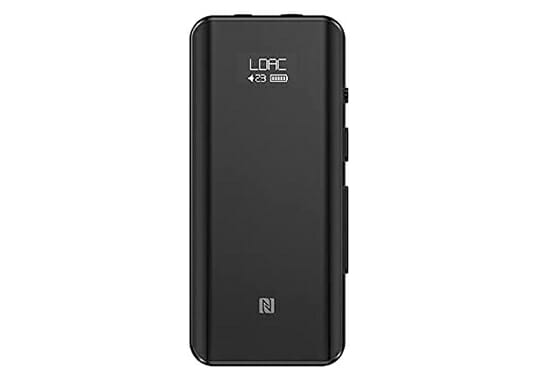
- 2x ES9219C Amp/DAC chip
- Native 32bit/384kHz
- CSR8675 Bluetooth chip
- 10m transmission distance
- 550mAh battery
The audiophile Bluetooth headphones and Amp/DAC market is relatively new therefore there is not much of a choice when it comes to good quality audio solutions for people that prefer wireless freedom.
Nonetheless, if you want to make your high-end wireless headphones sound a lot better, then you should take a look at the FiiO BTR5, their newest offering in terms of portable Amp/DACs. This tiny device uses a high-quality dual ES9219C Amp/DAC chip and a CSR8675 Bluetooth 5 chip.
It can play 32bit/384kHz natively and if you are a Tidal user it also supports MQA natively making sure you are getting the best possible audio quality from your device. The transmission distance is about 10m and it has a 550mAh battery to power the device.
Overall FiiO has a great reputation as an Amp/DAC manufacturer and the BTR5 is no exception to this rule.
- Delivers high-quality audio with wireless headphones
- Uses good internal components
- Portable compact device
- Can also be used in wired mode
- Wireless headphones will always lose in terms of quality over wired counterparts so using this Amp/DAC in wireless mode might look like a waste for a true audiophile
iFi Zen DAC V2
Premium Options in an Entry-Level Product
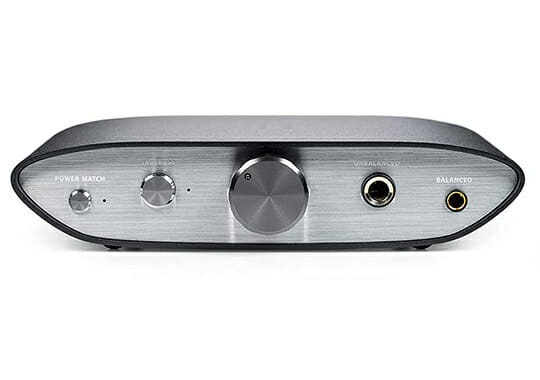
- Double-DSD128
- Quad-DSD256
- 16-core XMOS chip
- 384kHz/24bit
The iFi Zen DAC V2 is quite well known in the audio sphere because it offers plenty of options that you would not expect at the price level this device is being sold at. With the Zen V2 you are investing in solid tech like a Burr Brown True Native digital to analog converter that can do 384kHz/24bit, double-DSD128, Quad-DSD256, DXD 384kHz, and decodes MQA all in one.
What is even more surprising is that you have a variable analog volume control, a 4.4mm balanced input/output, a power match button for IEMs, and a fully analog TrueBass option to add some lower-end headphones like open-backs that are a bit thinner in that area.
You can even run the device with a 5V power input but generally, this can be driven by the USB-B port without any issues. Overall the Zen DAC V2 is quite an interesting product that can be easily recommended to anyone interested in improving their audio experience.
- A lot of handy options in a small package
- The technical aspect of this device is impressive
- The build quality is quite good with the unit feeling sturdy
- No output auto-switch
- No volume control besides the knob on the DAC
How To Choose A Headphone Amp
Now, let’s talk about how to pick a headphone amp that’s right for you. There are numerous amps out there and, in some cases, you might not need one. We will talk about the most important points regarding headphones amps below but first, let’s explain what a headphone amp is.
Headphone AMPs and DACs Explained
A headphone amp is, plainly speaking, a signal amplifier. It takes a low-voltage signal coming from an emitting device – a Hi-Fi system, PC, smartphone, MP3 player – and amplifies it to a level that allows the signal to be played as sound waves in your headphones. In other words, it amplifies audio signals until their voltage is high enough to be played on your headphones.
A DAC is a digital to analog converter. It’s a relatively new device. Back in the day, they weren’t needed because all devices capable of playing audio were analog. But today, when most of the devices we’re playing music on are digital – such as PCs and Macs, gaming consoles, smartphones, MP3 players, etc. – a DAC is needed in order to convert the digital signal into an analog one so it can be either played on headphones or sent to the amplifier for it to amplify it.
Now, DACs found in most digital devices are of poor quality. Some devices, such as the LG V line of smartphones, have excellent built-in DACs but most devices have average DACs good enough just to convert the signal and not to enhance it in any way. That’s why you’re seeing standalone DACs. Those are of high quality, used to filter and enhance digital signals while converting them to analog form.
There are headphone amps, there are DACs and there are devices that combine the two. Those can both turn digital signals into analog ones and amplify them, all in the same body.
Do You Really Need A Headphone Amp?
If you own a pair of budget headphones or a budget gaming headset, you probably don’t need a headphone amp. In fact, most digital devices already have a DAC and a headphone amp and they do a solid job of amplifying audio signals. For instance, a pair of headphones under $50 probably don’t need an amp because they don’t have anything to gain from using a separate amp.
But if you own a pair of high-end Hi-Fi headphones, you might need one. And we are talking about proper high-end headphones here. For instance, even a pair of great-sounding headphones, such as the Sennheiser HD 599, don’t need a headphone amp. You can get one and they might sound just a tad bit better but they don’t really need one.
High impedance headphones, on the other hand, do need an amp to function properly. Impedance is measured in ohms and it presents resistance to the electrical signal. Higher impedance means higher resistance, which means a higher gain signal is needed in order to punch through the high impedance. And most everyday devices we use to listen to music don’t have high gain signals. That’s why high impedance headphones need a separate headphone amp to work. Without one, the incoming signal will be very quiet because it can’t go through a high impedance.
For instance, the aforementioned Sennheiser HD 599 don’t need an amp because they have an impedance of 50 ohms. Even some high-end headphones have a low impedance of just 18 ohms. That’s low enough for headphones to sound pretty loud even when hooked to an average smartphone.
But headphones with an impedance of 70-80 ohms and greater, need an amp. These are studio and Hi-Fi models that were designed to work with powerful studio equipment that delivers high gain signals. They can have impedance up to 600 ohms and cannot be used with most digital audio outputs without a dedicated amp.
So, to summarize. In most cases, you don’t need a separate amp. Even solid Hi-Fi headphones can work without one. But if you own a pair of high impedance headphones, you’ll need one. Further, high-end Hi-Fi and studio headphones can sound noticeably better with an amp.
What You Can Gain With A Headphone Amp
As we already said, the most important thing you can gain is a higher volume of headphones. If they don’t sound loud enough you can make them louder by getting an amp. But, more importantly, a quality pair of headphones will get improved sound quality.
A deeper and more nuanced bass, for instance. Cleaner highs that aren’t sharp even when the volume is all the way up. Wider dynamic range. In other words, a greater level of details in songs that together, make for a more pleasant listen that’s much more nuanced than it would be without an amp.
What Kind Of Amp Do You Need?
If you’re listening to your music on the go, get a portable headphone amp. These come with a built-in DAC and are perfect for music lovers who listen to their tunes over a smartphone, portable music player, or a laptop.
If you’re mostly enjoying music in your house, get a regular headphone amp. Just make sure it has all of the ports you need to connect your sound sources and your headphones. And remember that even relatively affordable headphone amps – those with a price up to $100-150 – can greatly enhance sound.
The final choice is up to you but we would recommend a portable amp if you listen to your music mostly via your PC and smartphone and if you mostly use headphones. If you own a pair of high—end speakers you can get a desktop amp, hook all devices to it, and use it for both speakers and headphones.